<--Matariki: A wānanga with Dr Rangi Matamua

“Matariki appears as Whānui flees; this is the sign of the New Year.”
A whakatauki from the book Matariki, The star of the year, by Dr Rangi Matamua. This whakataukī is about Whānui, the star Vega in the constellation of Lyra. It is one of the brightest stars and sets in the north in the early winter morning before Matariki rises in the north-east.
LEARNZ kaiārahi Jamie talks about Matariki with Dr Rangi Matamua:
Matariki in the southern sky
Matariki is a whetū (star) cluster. It can be seen from most places on Earth. Matariki is also the name of the brightest star in the cluster. You can see between five and nine stars in the cluster without a telescope. There are as many as 500 stars in the cluster. They are about 440 light years away. One lightyear is 9.46 trillion kilometres.
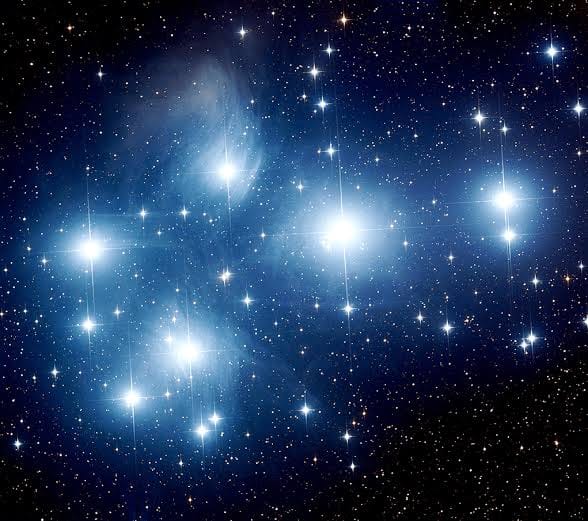
Image: Matariki, ©Living by the Stars.
Matariki can be seen all year except from around Haratua/Pipiri (May/June) when it sets with the sun. It rises again before dawn around Pipiri/Hongongoi (June/July). The reappearance of Matariki is the beginning of the Māori New Year in the cold months of takurua (winter).
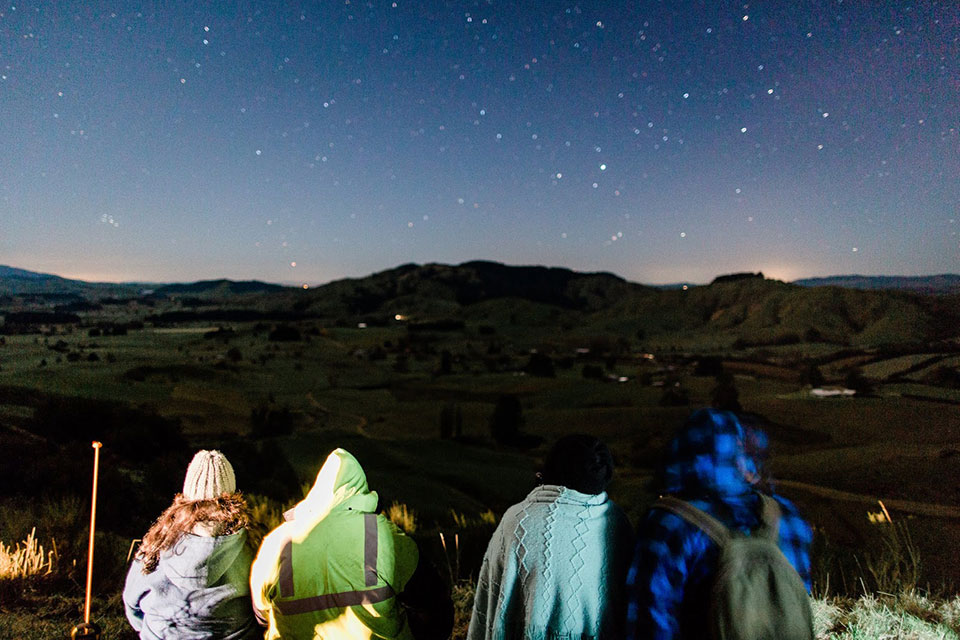
Image: Observing the rising of Matariki, ©Living by the Stars.
Maramataka Māori
The maramataka is the Māori lunar stellar calendar. Te Marama (the Moon) influences tides, fishing, planting, animals, and people. The maramataka refers to the Moon’s orbit around the Earth in relation to the Sun and stars. The word stellar refers to the stars and lunar refers to the Moon.
Māori have developed a comprehensive calendar that names and describes each night of the waxing and waning Moon. This knowledge is from observing lunar phases and environmental changes over lifetimes and generations.
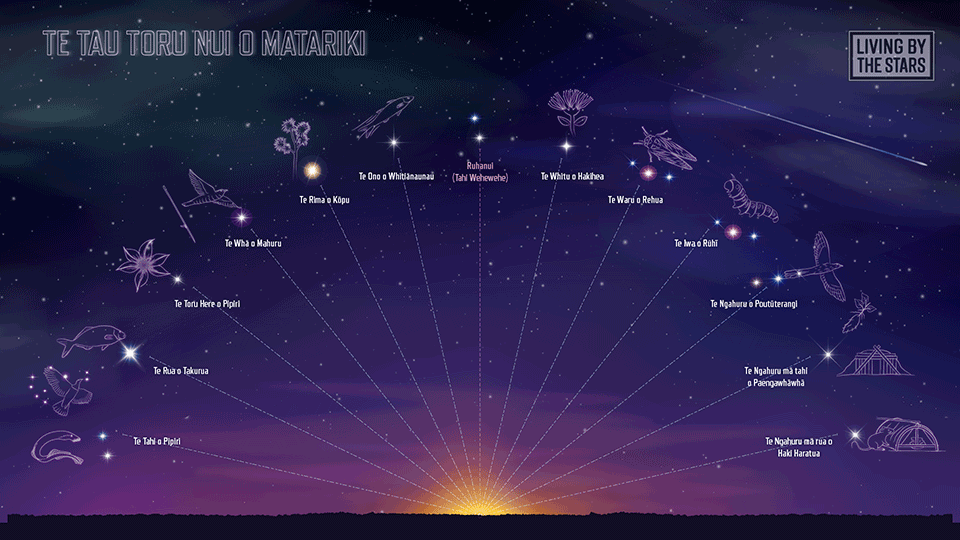
Image: Te Tau Toru Nui o Matariki, ©Living by the Stars.
Solar and lunar calendars
The calendar with months from January to December is called the Gregorian calendar, which replaced the Julian calendar in 1752. The Julian calendar began in ancient Rome over 2000 years ago. Both the Julian and Gregorian calendars track the Earth's orbit around the Sun. Early settlers to Aotearoa brought the Gregorian calendar along with days of the week named after Norse gods.
In the Gregorian calendar (European solar calendar) there are 365 days most years. An adjustment is made every fourth year by adding one day at the end of February to align with the movement of the sun. This is a leap year.
The lunar calendar is another way of measuring time through the seasons. Calculating the lunar cycle requires an understanding of rising and setting stars, Moon, planets, and Sun.
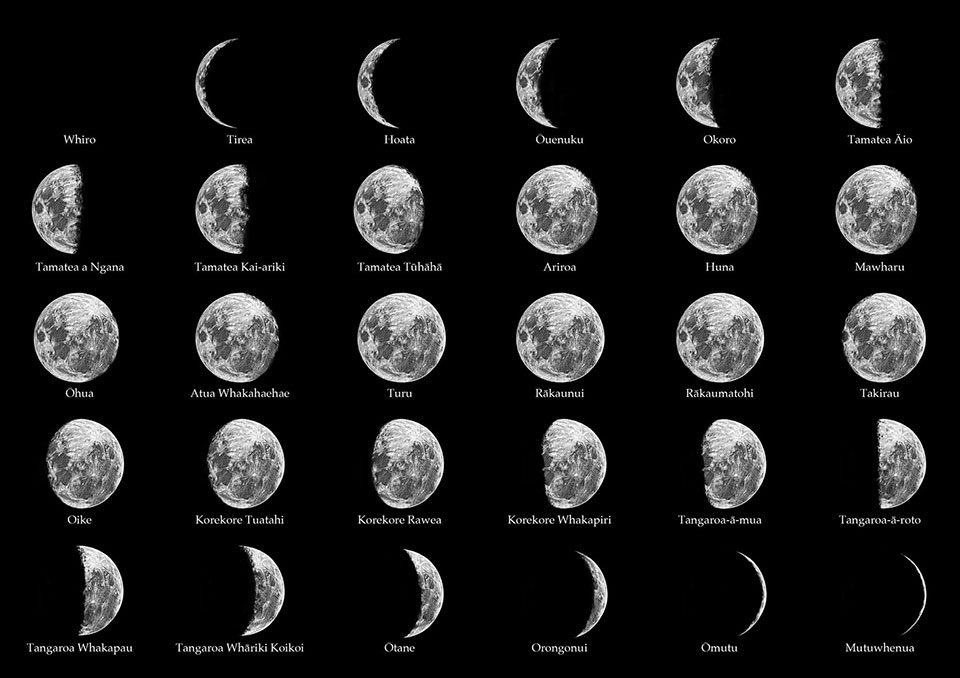
Image: Moon phases, ©Living by the Stars.
Moon maths
Maramataka is based on 12 lunar months of 29.5 nights each, within one solar orbit. This is during the time it takes for Earth to travel once around the Sun. Maramataka months begin with the night of the new moon. 12 months x 29.5 nights = 354 nights.
The solar calendar is based on one Earth orbit around the Sun, divided by twelve months. Each month starts at different times of the lunar phase. All solar months have 30 or 31 days, except February.
365 days / 12 months = 30.4 (average)
There is a difference of 11 days between the lunar and solar annual calendars. One night is added every so often to account for this difference . An extra month is also added every three years to synchronise the two calendars. The total number of lunar months over three years is 12 + 12 + 13= 37.
Every year, the date that Matariki is celebrated changes. This is because Matariki is observed by the cycle of the moon and this doesn’t align with the months of the Gregorian Calendar.
LEARNZ kaiārahi Jamie asks Dr Rangi Matamua why the dates for Matariki are different every year:
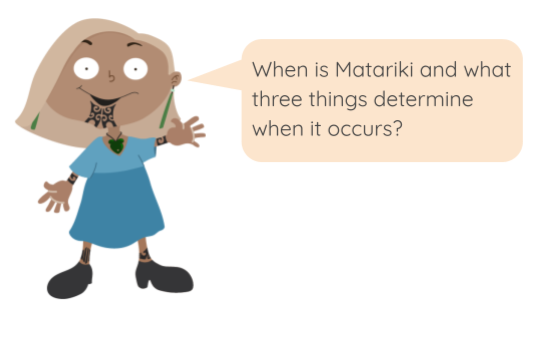
Rerenga kōrero / Key words
| Constellation | a group of stars that appear to form a shape |
| Star cluster | a group of stars connected by mutual gravity |
| Waxing | the moon appears to grow bigger until it is a full moon |
| Waning | after the full moon, it appears to grow smaller until it disappears |
| Whetū | star |
| Lightyear | light travels at 300,000 km/sec (9.46 trillion km/year) |
| Maramataka | Māori lunar stellar calendar based on the Moon, stars and Sun |
| Raumati | Summer |
| Kōanga | Spring |
| Takurua | Winter |
| Ngahuru | Autumn |




